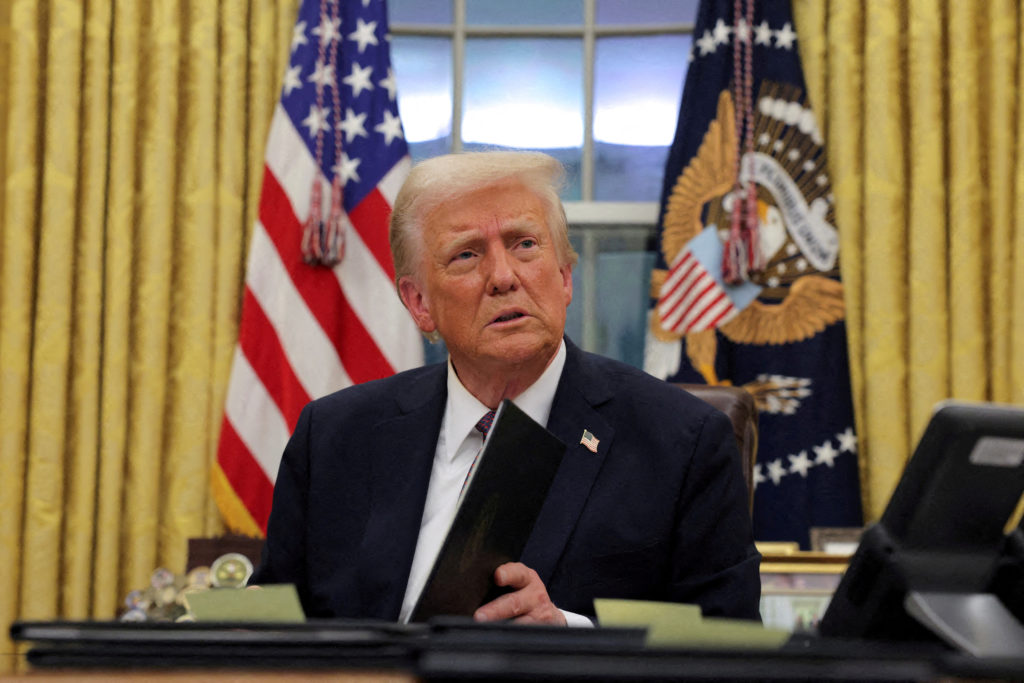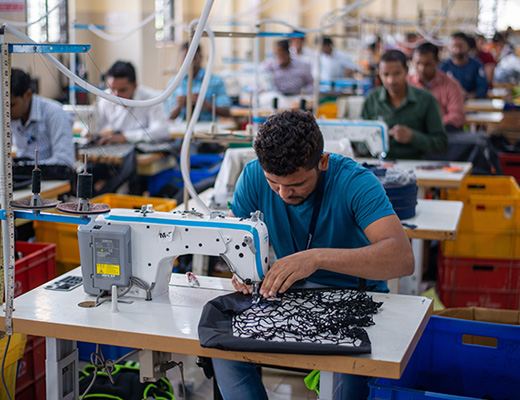Washington, July 30: US President Donald Trump on Wednesday announced the imposition of a 25 per cent tariff on all goods coming from India starting August 1, plus an unspecified penalty for buying military equipment and crude oil from Russia.
The surprise announcement came a day after Indian officials said that a US trade team would visit from August 25 to negotiate a trade deal.
The announcement is being seen a pressure tactics to get New Delhi to agree to demands made by the US, which has in recent days got favourable trade deals with major partners like Japan, the UK and the European Union.
In a post on social media handle, Trump termed India’s trade policies as “most strenuous and obnoxious”.
“All things not good! India will therefore be paying a tariff of 25 per cent, plus a penalty for the above, starting on August first,” Trump said..
The penalty because India has made large purchases of oil and military equipment from Russia.
India’s import of crude oil from Russia has risen from 0.2 per cent of total purchases before the Russia-Ukraine war to 35-40 per cent. New Delhi is the largest buyer of Russian oil after China.
Trump said though India is America’s friend, “we have, over the years, done relatively little business with them because their (India) tariffs are far too high, among the highest in the world, and they have the most strenuous and obnoxious non-monetary trade barriers of any country”.
He said India have always purchased significant amount of military equipment and energy products from Russia at a time when everyone wants Russia to stop the “killing” in Ukraine.
New Delhi did not immediately react to the tariff announcement but sources indicated officials were in a huddle to work out the implications.
It was, however, not clear if the 25 per cent duty will be imposed in addition to the existing 10 per cent baseline tariff. The 10 per cent tariff, which currently applies to most Indian goods barring a few, was announced by Trump on all countries on April 2.
Also, the exact quantum of the penalty is unclear.
Among India’s major trade competitors, the US has imposed lower tariffs on Vietnam (20 per cent) and Malaysia (25 per cent), but higher on Bangladesh (35 per cent) and Thailand (36 per cent).
On April 2 this year, Trump announced high reciprocal tariffs on number of countries including India (26 per cent). The implementation of high tariffs was immediately suspended for 90 days till July 9 and later until August 1, as America is negotiating trade deals with various countries. However, the baseline tariff of 10 per cent remains.
In addition to this, the US has imposed 50 per cent duty on steel and aluminium and the 25 per cent on auto sector.
Meanwhile, negotiations for the proposed bilateral trade agreement are on as a team from the US is visiting New Delhi on August 25 for the sixth round of talks.
The top officials of the countries concluded the fifth round recently in Washington.
India’s chief negotiator and special secretary in the Department of Commerce Rajesh Agrawal and Assistant US Trade Representative for South and Central Asia Brendan Lynch held the deliberations.
During 2021-25, the US was India’s largest trading partner. The US accounts for about 18 per cent of India’s total goods exports, 6.22 per cent in imports, and 10.73 per cent in bilateral trade.
With America, India had a trade surplus (the difference between imports and exports) of USD 35.32 billion in goods in 2023-24. It was USD 41 billion in 2024-25 and USD 27.7 billion in 2022-23.
In 2024-25, bilateral trade between India and the US reached USD 186 billion. India exported USD 86.5 billion in goods while importing USD 45.3 billion.
In services, India exported an estimated USD 28.7 billion and imported USD 25.5 billion, adding a USD 3.2 billion surplus. Altogether, India ran a total trade surplus of about USD 44.4 billion with the US.
In 2024, India’s main exports to the US included drug formulations and biologicals (USD 8.1 billion), telecom instruments (USD 6.5 billion), precious and semi-precious stones (USD 5.3 billion), petroleum products (USD 4.1 billion), vehicle and auto components (USD 2.8 billion), gold and other precious metal jewellery (USD 3.2 billion), ready-made garments of cotton, including accessories (USD 2.8 billion), and products of iron and steel (USD 2.7 billion).
Imports included crude oil (USD 4.5 billion), petroleum products (USD 3.6 billion), coal, coke (USD 3.4 billion), cut and polished diamonds (USD 2.6 billion), electric machinery (USD 1.4 billion), aircraft, spacecraft and parts (USD 1.3 billion), and gold (USD 1.3 billion). (PTI)




